Text
The way I personally stay true to the story I started down on is to give myself permission to not teach anyone anything. I’m not writing a manual. I’m not delivering bromides. I know that a lot of people do take enormous pleasure and relief in lines or phrases or ideas from stories that ring true to their own lives, but it’s important for me that I tell a story and that I’m not writing Chicken Soup for the Necromantic Soul. It is getting harder and harder again, especially for authors from marginalised places or backgrounds, to write works where the takeaway isn’t ‘this is to succour all my marginalised people’. For anyone on the female-identified axis this is especially hard because it seems to me that most books by anyone female-adjacent have an expectation that they will comfort the uncomfortable and discomfit the comfortable etc., whereas a guy can just tell an adventure story and be done with it. This ties in with an idea that I think <is prevalent> nowadays that good art is moral and bad art is immoral: i.e. if a story is bad it actually has to be because the lessons are bad, and if a story is good it must somehow be beautiful on the moral scale. We go looking for why the art we love is moral even if the art we love is a donut. I think this is the pressure of capitalism on time – that everything has to double or triple up in benefit compared to the time we take on it: if we’re prepared to waste eight hours on a book we had better be able to tot up at the end how that book was also feeding us in some way. That’s brand time we just used.
I am writing for my younger self and it would be disgusting of me to try to teach her anything.
Tamsyn Muir, Interview with Ciara Seccombe, 2/5/22
4K notes
·
View notes
Photo
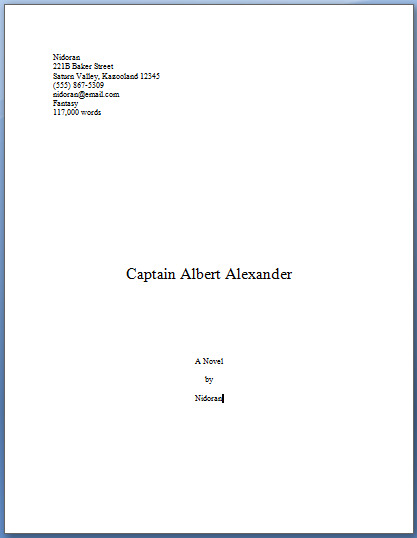
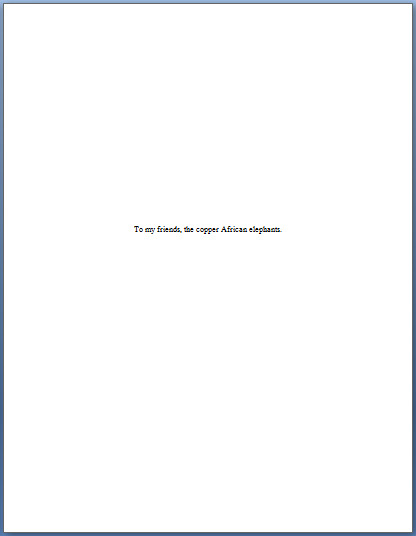

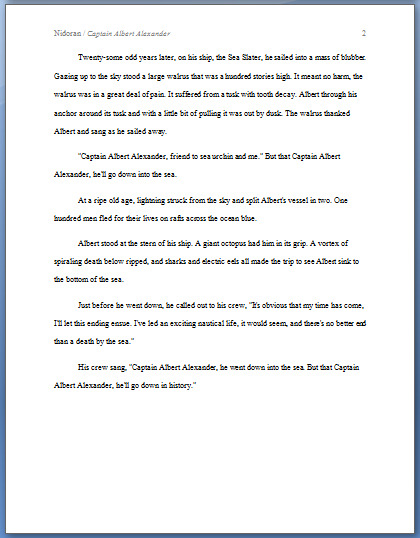
Formatting your Manuscript
If you’re planning on one day turning your manuscript in to literary agents and publishing houses, you need to make sure it’s formatted correctly. In many cases, your manuscript will be skipped over if it isn’t done to industry standard, so here’s the basics that you’ll need if you don’t want to be ignored. Before I get started, please know that this is aimed specifically at fiction manuscripts. If you’re writing non-fiction or a memoir, the expectations will be different, so it would be wise to Google what you need.
The Basics
Make sure your font is 12 point Times New Roman, Courier New, or Arial. These are the only three fonts you are allowed to pick from.
Your spacing should be 1 inch on all sides of the text. This is the default on most word processors, but double check your settings just to be sure.
Your text should be double spaced.
All of your indentations must be a half inch. Do not press indent. Instead, drag over the top arrow on the ruler to have every new paragraph automatically indent.
The Title Page
The top left-hand corner of your title page will have all your personal information. They want to see your name, address, phone number, e-mail address, the novel’s genre, and word count.

Your novel’s title is allowed to be between 20-24 point font if you want. Bold is also an option, but not necessary.
The title will appear halfway down the title page.
“A novel by [your name]” will be about three quarters of the way down the page.
The Next Pages
If you have a dedication, it will be on its own page.
If you have some sort of verse or quote, those will also need their own pages.
Do not include a page for acknowledgements.
The Chapters
Chapter titles will be 12 point font. No bolding or italics.
Chapters will start from one quarter to halfway down the page.
An easy way to format chapter headings is to press enter five or six times
Make sure you always start your chapters the same way every time.
When you start a new chapter, make sure you use a page break to bump the new chapter onto a new page. This will keep it in place so that it will never budge, no matter how much you cut out or add to the previous chapter.
Page Numbers
Page numbers will start with 1 on Chapter 1 of your manuscript. Page numbers will not appear on the title page or dedication page.
Page 1 will be labeled in the footer of Chapter 1. It should be centered.
Page 2 will be in the header of the next page.
From page 2 onward, your headers will be labeled like this:

If you insert a section break after the title and dedication pages, it will make it easier to insert the page numbers.
For the most part, this is the most important of what you’ll need to know for formatting your manuscript. I used this video as reference, so I’m trusting everything it says is true because it was made by an author who has several novels published, and because it was uploaded this year, it should be up to date.
But just remember, whenever you go to turn in a manuscript, make sure you check the website of the agent or publisher you’re trying to contact. They might have specifications that differ with the ones stated in this video, and you should always do whatever you can to abide by what they want.
74K notes
·
View notes
Text
Writing Traumatic Injuries References
So, pretty frequently writers screw up when they write about injuries. People are clonked over the head, pass out for hours, and wake up with just a headache… Eragon breaks his wrist and it’s just fine within days… Wounds heal with nary a scar, ever…
I’m aiming to fix that.
Here are over 100 links covering just about every facet of traumatic injuries (physical, psychological, long-term), focusing mainly on burns, concussions, fractures, and lacerations. Now you can beat up your characters properly!
General resources
WebMD
Mayo Clinic first aid
Mayo Clinic diseases
First Aid
PubMed: The source for biomedical literature
Diagrams: Veins (towards heart), arteries (away from heart) bones, nervous system, brain
Burns
General overview: Includes degrees
Burn severity: Including how to estimate body area affected
Burn treatment: 1st, 2nd, and 3rd degrees
Smoke inhalation
Smoke inhalation treatment
Chemical burns
Hot tar burns
Sunburns
Incisions and Lacerations
Essentials of skin laceration repair (including stitching techniques)
When to stitch (Journal article–Doctors apparently usually go by experience on this)
More about when to stitch (Simple guide for moms)
Basic wound treatment
Incision vs. laceration: Most of the time (including in medical literature) they’re used synonymously, but eh.
Types of lacerations: Page has links to some particularly graphic images–beware!
How to stop bleeding: 1, 2, 3
Puncture wounds: Including a bit about what sort of wounds are most likely to become infected
More about puncture wounds
Wound assessment: A huge amount of information, including what the color of the flesh indicates, different kinds of things that ooze from a wound, and so much more.
Home treatment of gunshot wound, also basics
More about gunshot wounds, including medical procedures
Tourniquet use: Controversy around it, latest research
Location pain chart: Originally intended for tattoo pain, but pretty accurate for cuts
General note: Deeper=more serious. Elevate wounded limb so that gravity draws blood towards heart. Scalp wounds also bleed a lot but tend to be superficial. If it’s dirty, risk infection. If it hits the digestive system and you don’t die immediately, infection’ll probably kill you. Don’t forget the possibility of tetanus! If a wound is positioned such that movement would cause the wound to gape open (i.e. horizontally across the knee) it’s harder to keep it closed and may take longer for it to heal.
Broken bones
Types of fractures
Setting a broken bone when no doctor is available
Healing time of common fractures
Broken wrists
Broken ankles/feet
Fractured vertebrae: Neck (1, 2), back
Types of casts
Splints
Fracture complications
Broken noses
Broken digits: Fingers and toes
General notes: If it’s a compound fracture (bone poking through) good luck fixing it on your own. If the bone is in multiple pieces, surgery is necessary to fix it–probably can’t reduce (“set”) it from the outside. Older people heal more slowly. It’s possible for bones to “heal” crooked and cause long-term problems and joint pain. Consider damage to nearby nerves, muscle, and blood vessels.
Concussions
General overview
Types of concussions 1, 2
Concussion complications
Mild Brain Injuries: The next step up from most severe type of concussion, Grade 3
Post-concussion syndrome
Second impact syndrome: When a second blow delivered before recovering from the initial concussion has catastrophic effects. Apparently rare.
Recovering from a concussion
Symptoms: Scroll about halfway down the page for the most severe symptoms
Whiplash
General notes: If you pass out, even for a few seconds, it’s serious. If you have multiple concussions over a lifetime, they will be progressively more serious. Symptoms can linger for a long time.
Character reaction:
Shock (general)
Physical shock: 1, 2
Fight-or-flight response: 1, 2
Long-term emotional trauma: 1 (Includes symptoms), 2
First aid for emotional trauma
Treatment (drugs)
WebMD painkiller guide
Treatment (herbs)
1, 2, 3, 4
Miscellany
Snake bites: No, you don’t suck the venom out or apply tourniquettes
Frostbite
Frostbite treatment
Severe frostbite treatment
When frostbite sets in: A handy chart for how long your characters have outside at various temperatures and wind speeds before they get frostbitten
First aid myths: 1, 2, 3, 4, 5 Includes the ones about buttering burns and putting snow on frostbite.
Poisons: Why inducing vomiting is a bad idea
Poisonous plants
Dislocations: Symptoms 1, 2; treatment. General notes: Repeated dislocations of same joint may lead to permanent tissue damage and may cause or be symptomatic of weakened ligaments. Docs recommend against trying to reduce (put back) dislocated joint on your own, though information about how to do it is easily found online.
Muscular strains
Joint sprain
Resuscitation after near-drowning: 1, 2
Current CPR practices: We don’t do mouth-to-mouth anymore.
The DSM IV, for all your mental illness needs.
Electrical shock
Human response to electrical shock: Includes handy-dandy voltage chart
Length of contact needed at different voltages to cause injury
Evaluation protocol for electric shock injury
Neurological complications
Electrical and lightning injury
Cardiac complications
Delayed effects and a good general summary
Acquired savant syndrome: Brain injuries (including a lightning strike) triggering development of amazing artistic and other abilities
Please don’t repost! You can find the original document (also created by me) here.
127K notes
·
View notes
Text
South Asian cuisine in fantasy + coding
@octoswan asked:
Thanks to the Eurocentrism of fantasy, we tend to think of fantasy cuisines as being stuff like soup, bread, cheese, mead, mutton, etc. They’re the basic go-to staples. But if you’re writing a fantasy that’s more Asia-centric, you’d have to use foods like rice, chapati, curry, noodles, tempeh, etc. Eurocentric cuisine is up for grabs for the most part, but Asian cuisines would be problematic if done incorrectly. This I’m aware of, and I’m trying to juggle between drawing from real cuisines and making up fantasy cuisines. To be clear, the people in my fantasy universe are mostly South Asian and East Asian as well, or at least an attempted non-appropriated version of some of these cultures. I guess my question is: is it ok to use these ingredients and dishes in passing in the same way that Eurocentric fantasies use their cuisines?
“Soup, bread, cheese, mead, mutton?” South Asian cuisine has literally all of those things. It’s just that the soup is lentils, the bread is flat, the cheese doesn’t melt, the “mead” has marijuana in it, and the mutton is actually lamb. Rice is a staple. Chapati is just a flat bread roasted in a pan, “curry” is an umbrella term coined by the British that comes from a Tamil word meaning “sauce” (and please don’t tell me you can culturally appropriate the concept of sauce—specific sauces, yes, but not sauce at large), noodles and tempeh aren’t typically South Asian but are also a natural byproduct of the ingredients available in their environments—
My point is that foodstuffs often have analogues across cultures, being made with similar techniques or ingredients in different times and places. Food crosses boundaries in a way that most other things do not. Can you imagine Indian food without tomatoes, potatoes, or chili peppers?—not one of those things was present in India before the 16th century. Appreciating, using, or even importing another culture’s cuisine isn’t cultural appropriation—what’s appropriation is when the affluent couple in Williamsburg starts up a “fusion” restaurant with recipes they ripped off from the “ethnic” family-run hole-in-the-wall across town, tidy it up, dumb it down, and friendlyify it for their neighbors while passing it off as their own creation “inspired by the tastes of Asia” or whatever. It wasn’t yours to begin with, stop pretending like it is.
I would suggest not getting so hung up on the label and instead think about flavor and ingredients—the heat of ginger, the sour tang of tamarind, the unique flavor of turmeric. Think about techniques—rolling out a flat piece of bread dough, taking care to make it round, and slapping onto an open flame until it poofs up (if you weren’t aware that that’s how chapati are made, then that’s a place to start doing some research). People familiar with those foods will recognize the description. Roti just means “bread.” Dal just means “split peas.”
These don’t have to be loaded terms to handle with kid gloves. Foods are important cultural markers but when they’re situated within the culture that’s generally considered to have come up with them, they might just be props in the act of eating. You know what my grandmother calls Indian food? Food.
-mod Nikhil
2K notes
·
View notes
Text
Writing x Characters When You Aren’t x, A Masterlist
x: a variable used to represent something unknown.
We’ve seen an influx of questions about how to write stories based around characters of color, disability, non-binary, etc. when the author does not fall into these categories. Rather than have these posts take over the site, we’ve decided to compile a list of resources to help our fellow writers become more educated about writing what they do not immediately know. However, this list is not the end-all-be-all of knowledge; one should always try to learn from someone with first hand experience in any topic. The world is constantly growing and changing, and because of that, there will always be more to learn. The admins at Plotline Hotline want to help writers form respectful, informed, and realistic characters that broaden the narrow range we see in literature today.
*Be wary that some of the topics listed below contain sensitive material. Reader discretion is advised.*
As always, the links I found to be especially apt will be in bold. Topics are listed alphabetically, excepting the “other” section.
Culture
Appropriate Cultural Appropriation
What is Cultural Appropriation? [1,2,3]
Cultural Appropriation Is, In Fact, Indefensible
Voice Appropriation & Writing About Other Cultures
Diversity, Appropriation, and Writing the Other [List]
Disability
Writing Disibilities [1,2,3,4,5]
Guides to Writing Deaf or Hard of Hearding People
National Association of the Deaf - Resources [List]
World Federation of the Deaf
Using a Prosthetic Device
Prostehtic Limbs (Character Guide)
How NOT to Write Disabled Characters
A Guide to Disibility Rights Law (United States)
Timeline of Disibility Rights in the United States
Social Security Disability: List of Impairments, Medical Conditions, and Problems [List] (United States)
How to Write Disabled Characters: An Opinion Piece
Artificial Eye Resources [List][Various]
Adapting to the Loss of an Eye
Misconceptions and Myths About Blindness
Blind Characters: A Process of Awareness
Writing Blind Characters [List]
Types of Learning Disabilities [List]
Diversity
A Guide to Spotting and Growing Past Stereotypes
How to Prepare to Write a Diverse Book
The Diversity of Writing
Why Diversity Matters for Everyone
Writing a Driverse Book [1,2,3,4,5]
Diversity, Political Correctness and The Power of Language
Diversity Book List [List][Books]
Basic Tips To Write Subcultures & Minority Religions Better
Basic Tips to Avoid Tokenism
Gender
GLAAD Media Reference Guide - Transgender
Creating Well-Written Trans Characters
A Few Things Writers Need To Know About Sexuality & Gender Expression
Trans (Character Guide & Bio Building)
A Non-Binary Person’s Guide to Invented Pronouns
Gender Neutral Writing [List]
Keeping a Trans* Person a Person
Suggestions for Reducing Gendered Terms in Language [Photo]
How to Review a Trans Book as a Cis Person
Writing Characters of Different Genders [List]
Understanding Gender
Gender Spectrum Resources [List]
Gender History
Illness
Writing Chronic Illness [1,2]
The Spoon Theory - Also pertains to disibility
About HIV/AIDS
Sexually Transmitted Diseases [List]
Sexually Transmitted Infections
Sex and Gender Differences in Health [Study]
All Chronic Illness Topics [List]
Coping with Chronic Illness
All Cancer Types
A Day in the Life of a Home Health Aide/Health Coach
Fiction Books With Chronically Ill Main Characters- Not Cancer [List][Books]
Neurotype (Including Mental Health)
Writing an Autistic Character When You Don’t Have Autism
Depression Resources [List]
What to Consider When Writing Mental Illness
Stanford Psychiatric Patient Care
Inpatient Psychiatric Questions and Tips
Don’t Call Me Crazy [Documentary]
(Avoid) Romanticizing Mental Illness [1,2]
A Day in the Life of a Mental Hospital Patient
State-run vs. Private Mental Hospitals
Mental Disorders
Mental Hospital Non-Fiction [List][Books]
National Institute of Mental Health - Mental Health Information [List]
Writing Autistic
What Causes PTSD?
Remember, Remember: The Basics of Writing Amnesia
ADHD Basic Information
What is a Learning Disability?
What is Neurotypical?
Race
Writing Race: A Checklist for Authors
Transracial Writing for the Sincere
Is my character “black enough”
White Privilege: Unpacking the Invisible Knapsack
Challenge, Counter, Controvert: Subverting Expectations
Writing With Color: Blogs - Recs - Resources [List]
Writing People of Color (If you happen to be a person of another color)
7 Offensive Mistakes Well-Intentioned Writers Make
Description Guide - Words for Skin Tone
Religion
Religion in Novels: Terrific or Taboo?
How to Write a Fantasy Novel that Sells: The Religion
Writing About Faith And Religion
From Aladdin to Homeland: How Hollywood Can Reinforce Racial and Religious Stereotypes
Sexuality
Understanding Sexual Orientation and Gender Identity [List]
Writing Gay Characters [1,2,3]
American Civil Liberties Union - LGBT+ Rights
LGBT+ Rights by Country or Territory
History of Gay Rights
Gay Rights Movement
LGBT+ Culture
Gay Myths and Stereotypes
LGBT+ Studies Web Sites [List]
LGBTQ Youth Issues
LGBTData.com
Overview of Gay and Lesbian Parenting, Adoption and Foster Care (United States)
Other
How Doctors’ Offices—and Queer Culture—Are Failing Autistic LGBTQ People
Five Traps and Tips for Character Development
Developing Realistic Characters
I hope that this list will provide topics a writer may not initially think to research when writing. If there are any resources that you think would be fitting for this list, please let us know! We want to have as many helpful sources as possible to maximize learning opportunities.
Stay educated,
xx Sarah
57K notes
·
View notes
Text
tips for writing void and water navies
So, since I actually work around boats all day and also have a thing for blathering about the voidfaring life, here’s a few things I wanted to share that maybe other people might find helpful for adding some realism and believability to their own fictions involving the same things.
Naming Conventions:
Ships are often referred to incorrectly in fiction. A ship’s name does not have “the” in front of it, unless that is actually part of the name of the vessel. Example sentence:
Correct: Vengeful Spirit was an exceptional vessel, the only Scylla variant-build ever constructed of the ancient and intimidating Gloriana pattern.
Incorrect: The Vengeful Spirit awaited them, a hulking monstrosity cruising slowly just above atmos as she waited in low orbit.
Now, this is not a hard and fast rule. There is a time that you can call a ship “the -name-,” and that is if the ship has been destroyed/sunk/decommissioned, is a piece of history thought to be destroyed, etc. Examples of this: The Black Pearl, the Edmund Fitzgerald. Just be aware that, generally, if your ship in question is still in service and has not become a legend yet, she probably doesn’t have “the” in front of her name. However, you /can/ name a vessel The Fickle Female, or something like that,in which case “the” is part of the name and is fine. Also, pirate ships and privately-run vessels may have “the” in front of their names, though this can make them sound a bit hokey and corny. Another semi-exception is when using the vessel’s full name/title, example “the U.S.S. Enterprise” or “the H.M.S. Titanic” (although Titanic could also call under the “historical indicator from “the.” Passengers who are not familiar with shipfaring may also think of the vessel as “the Glorious Name,” but your crew, and most likely your omniscient narrator, would not.
Long story short? If your vessel left for her maiden voyage ten or a hundred years ago and hasn’t yet left service… no need for “the”– especially if it’s a crewman doing the talking.
Terminology:
Ships have their own words for everything. Here’s a quick rundown:
Berth/Berthing: places where crew or possibly passengers sleep.
Quarters: Same as above, but generally insinuating more luxurious accommodations.
Bow: The front/nose of the ship, as a noun
Stern: The rear/ass end of the ship, as a noun.
Prow: The very front of the bow, the “nose” of a ship.
Transom: The flat “ass” of a ship.
Engines: Whatever makes your ship go. Boats may have motors, but ships have engines.
Bulkhead: An interior wall of a ship.
Gunwale: Pronounced “gunnel.” The outside “wall” of the ship as created by the hull.
Hatch: A door or doorway. You can close a hatch or walk through a hatch.
Hatchway: Doorway. You cannot “close” a hatchway, but only walk through it.
Porthole: a window
Ahead: To engage the engines in a way that the ship moves forward, as in “full steam ahead.”
Astern: To engage the engines in such a way that the ship moves backward/in reverse.
Deck: Any “floor” in or on the ship. Stuff you walk on.
Topside/abovedecks: the “outside area” of a boat. Where you can stand and feel the air on your face.
Belowdecks: “inside” the ship’s hull. “below” is a shortening of this.
Bilge: A pump that removes water (or whatever) from inside the vessel.
Scuttle: to trash something or throw it out.
Scuttlebutt: Rumors and gossip, trashtalking.
Galley: The kitchen.
Head: bathrooms
Bridge: The part of the ship where it is controlled.
Helm: Phrase for describing the person actually controlling the ship’s movements. The person “at the helm” is the person making the decisions, not the person with the wheel in their hands. If your captain tells his first mate, “Six degrees to starboard, steady on”, the captain is at the helm. If the first mate is making that decision himself because the captain can’t, he’s “at the helm.”
Moorings: attachment to a dock. “moored” meaning attached in this way.
Flotsam: Stuff floating in the water, or in space.
Masts: Big posts that sails fly from.
Boom: Big post going across the mast that sails attach to.
Make fast: tie shit down
Eye: a round thing to tie to or pass a rope through.
Cleat: a thing for tying shit to.
Lines: Ropes.
Hold: Any large space inside of a ship to put shit, or “stow” it.
There’s lots more, and lots if you want to get into sailing vessels involving the names for the different sails and masts and such, but this is enough to get you started.
Directions and time:
Ships have their own way of designating the “directions” on the ship. Aft and stern are not synonyms: aft is a direction, the stern is the actual physical part of the ship. Same with forward and bow.
Forward: The “front” direction, anything from the middle of the ship to the very tip of the prow.
Aft: The ass end direction. Anything from the middle to the very farthest back part of the ship.
Port: If you are standing on the ship and looking forward, this is going to be on your left. It’s easy to remember because “left” and “port” both have four letters.
Starboard: Pronounced “starberd.” The “right” side of the ship, if you are standing on the ship, looking forward. Two R’s in starboard– “right.”
This is helpful in writing because you can use these words to describe how your characters move about their surroundings, IE, “She looked up, lost, heading what she assumed was aftward.”
Ships generally have their own clock and specific time. Even today in real life, submarines will have their own times and clocks, often with each crewmember on his own clock.
Summary: Idk people, talk about the cool shit in your spaceships more! Hope this helped.
2K notes
·
View notes
Text
How to write fic for Black characters: a guide for non-Black fans
Don’t characterize a Black character as sassy or thuggish, especially when the character in question is can be described in literally ten thousand other ways..
Don’t describe Black characters as chocolate, coffee, or any sort of food item.
Don’t highlight the race of Black characters (ie, “the dark man” or “the brown woman”) if you don’t highlight the race of white characters.
Think very carefully about that antebellum slavery or Jim Crow AU fic as a backdrop for your romance.
If you’re not fluent with AAVE, don’t use it to try to look cool or edgy. You look corny as hell.
Don’t use Black characters as a prop for the non-Black characters you’re actually interested in.
Keep “unpopular opinions” about racism, Black Lives Matter, and other issues pertinent to Black folks out the mouths of Black characters. We know what the fuck you’re doing with that and need to stop.
Don’t assume a Black character likes or hates a certain food, music, or piece of pop culture.
You can make a Black character’s race pertinent without doing it like this.
Be extremely careful about insinuating that one or more of a Black character’s physical features are dirty, unclean, or ugly.
Feel free to add more.
105K notes
·
View notes
Note
(so I sent this before, but I don't think it send correctly.) I'm writing an IronPanther one shot, and I'm trying to describe T'Challa in a way that isn't fetishizing. Do you have any tips for ways I can describe him that is very appreciative of the way he looks without being hella creepy? What are some dos and don'ts?
Hi! Thanks for your question :) It’s very responsible of you to be mindful of this issue. I’ll try to cover the bases, but I’m not a person of color, so this is only based on reading and research…
Writing Characters of Color: Dos and Don’ts
First things first: I would suggest to anyone writing characters of color that you should follow @writingwithcolor. It’s my absolute favorite blog on the topic of diverse writing, and includes plenty of resources for most races and cultures. I’ll probably link you to a couple of their posts in this guide, so keep an eye out! So here we go…
Do: Make their race clear.
In fact, clearly designate the race of all characters! Even if a majority of your characters are white, you should state this in their description – otherwise, you’re painting the image that white is Baseline and Normal, while black/brown/beige are Divergent and Strange. Understand that many readers will assume White Until Proven Otherwise. This means that if you shy away from stating a character’s color in the fear of offending PoC readers, you’re actually just erasing the character’s race altogether. (Personal note: obviously your readers will know what color T’Challa is, so this is a point for the future.)
Don’t: Use descriptors that make me hungry.
“Chocolate,” “caramel,” “coffee,” “brown sugar,” “cinnamon,” “honey” – you get the idea. Anything that could also be used to describe my dessert is probably a terrible idea. Not only is this not at all how white characters are described, which is unfair, but the reduction of adult, three-dimensional people to grocery items has racially-aggressive roots. This is where I’m gonna link you to Writing With Color’s guide on how (and how not) to describe characters of color.
Do: Familiarize yourself with the harmful stereotypes.
This means a little research, no matter what race you’re writing. A lot of the racist mistakes made in literature/fanfiction come from a place of ignorance, sometimes willfully. People avoid learning the dirty past of racial representation in media, because they’re afraid they’ll subconsciously absorb them. It’s a weird complex and I advise you, and all writers, to take the time to glance over the most offensive stereotypes for people of color, women, LGBT, trans/nonbinary, autistic, mentally ill, and disabled people. This will not only keep you from hurting anyone, but it also makes your writing more unpredictable and interesting! Plus, it makes you not-one-of-those-douchebags-who-write-two-dimensional-exotic-chocolate-brown-mistresses and all that 👍
Don’t: Desexualize your characters.
This is a common mistake that can come from good intentions. You’re try so hard not to fetishize a character of color and then it reduces them to a non-sexual, non-attractive broom in the corner. Characters of color – all characters really – god, especially women – should be three-dimensional and fully developed people, who are not sold to readers on their looks and sexual appeal. BUT this doesn’t mean you should exclude all sexuality in writing. T’Challa, for example, is a damn handsome man – you can’t possibly write him and ignore how nice he looks! So don’t be afraid to describe him physically. You can describe his eyes and his lips and his muscles and we will read happily. Go ahead and talk about how smooth and warm and rich his skin is. As long as sexuality is described through a lens of admiration, rather than objectification – and as long as their sexuality exists in accompaniment to their full, developed personality, and not instead of it – then there’s nothing wrong with making a character bangin’ hot. So do it. And lastly…
Do: Consider collaborating with a beta-reader.
You said in your previous ask that this was one of your first attempts at writing characters of color, so I’d suggest that if you feel nervous about it, partner up with a beta-reader who has enough experience to keep you in check. It’s our responsibility as writers (especially for white, privileged writers such as myself) to learn to look at ourselves and assess whether or not we’ve crossed the line. Having someone beta-read for you will show you the critical thinking process to go through, so eventually, you’ll be able to do it without thinking about it! Maybe a few people here would be interested in a betaship.
Those are my top Dos and Don’ts, but as always, this is limited to my experience. Be sure to check out @writingwithcolor and do your research – and remember that no matter how much research you do, you’re bound to make a mistake or two. If it happens and a reader points it out to you, don’t beat yourself up about it or get defensive. Just apologize, correct the mistake, and move on.
Thanks again, and good luck :) Happy writing!
If you need advice on general writing or NaNoWriMo, you should maybe ask me!
3K notes
·
View notes
Text
Myths, Creatures, and Folklore
Want to create a religion for your fictional world? Here are some references and resources!
General:
General Folklore
Various Folktales
Heroes
Weather Folklore
Trees in Mythology
Animals in Mythology
Birds in Mythology
Flowers in Mythology
Fruit in Mythology
Plants in Mythology
Folktales from Around the World
Africa:
Egyptian Mythology
African Mythology
More African Mythology
Egyptian Gods and Goddesses
The Gods of Africa
Even More African Mythology
West African Mythology
All About African Mythology
African Mythical Creatures
Gods and Goddesses
The Americas:
Aztec Mythology
Haitian Mythology
Inca Mythology
Maya Mythology
Native American Mythology
More Inca Mythology
More Native American Mythology
South American Mythical Creatures
North American Mythical Creatures
Aztec Gods and Goddesses
Asia:
Chinese Mythology
Hindu Mythology
Japanese Mythology
Korean Mythology
More Japanese Mythology
Chinese and Japanese Mythical Creatures
Indian Mythical Creatures
Chinese Gods and Goddesses
Hindu Gods and Goddesses
Korean Gods and Goddesses
Europe:
Basque Mythology
Celtic Mythology
Etruscan Mythology
Greek Mythology
Latvian Mythology
Norse Mythology
Roman Mythology
Arthurian Legends
Bestiary
Celtic Gods and Goddesses
Gods and Goddesses of the Celtic Lands
Finnish Mythology
Celtic Mythical Creatures
Gods and Goddesses
Middle East:
Islamic Mythology
Judaic Mythology
Mesopotamian Mythology
Persian Mythology
Middle Eastern Mythical Creatures
Oceania:
Aboriginal Mythology
Polynesian Mythology
More Polynesian Mythology
Mythology of the Polynesian Islands
Melanesian Mythology
Massive Polynesian Mythology Post
Maori Mythical Creatures
Hawaiian Gods and Goddesses
Hawaiian Goddesses
Gods and Goddesses
Creating a Fantasy Religion:
Creating Part 1
Creating Part 2
Creating Part 3
Creating Part 4
Fantasy Religion Design Guide
Using Religion in Fantasy
Religion in Fantasy
Creating Fantasy Worlds
Beliefs in Fantasy
Some superstitions:
Read More
313K notes
·
View notes
Text
How To Blend Cultures (Without Making Impossible Mixes)
This is a guide specifically about fantasy worldbuilding. WWC gets a lot of questions around “I’m mixing two cultures together, how do I do that?” and this is to explain both how to do that and when you very much should not.
For starters, you should avoid blending empires with their surrounding properties, especially if there is recent political strife along those lines. This is why Japan/China/Korea (or even China/Tibet) mixes should not be done. For more information on that, take a look at Research:Large to Small Scale, Avoiding Homogenizing East Asian Cultures, & Paralleling Regions Appropriately.
Next up, mixing Greece/Rome with far-flung cultures gets a little bit eyebrow raising. Unless it was a direct trading partner/conquered property, Greek/Roman cultures do not mix with non-European cultures. The Greek empire only went to the Northern regions of India at its very peak, and that is limited to the ancient world. Rome stopped in the Middle East, so, again, you don’t have the cultural backing for a mixing of anything outside of its borders.
Depictions of Rome and Greece in ancient literature shows other ancient cultures found them quite backwards, and were adverse to mixing with them. By many standards they were very backwards, and it’s only Europe (and, as an extension, America) that revered them to the extent they do. Asia and Africa had no reason to see them as advanced, because they made many more technological advancements than either. North America and Oceanic cultures hardly interacted with either, and had both their own technological advancements+ cultures closer by to borrow advancements from, instead.
Outside of that, cultures are born out of the environments that made them. As a result, places with wildly dissimilar climates and resources pools will not be able to blend harmoniously unless you’re taking a modern analogue society where globalism has happened. This is plain old because resources only travel so far, and people are more likely to build culture around resources they have easy access to (even well-established trade links can lead to people re-creating things: Han purple and Egyptian blue point to an ancient trade link, but they were made with local materials processed differently).
Roman architecture exists because the Romans had access to copious amounts of concrete materials/marble and lived in the Mediterranean, which got very hot summers, heavy rains, and not a whole lot of cold. As a result they created structures that worked for this, which included open airways, pillars, easy to clean floors, shade, and ventilation. Places that lack these resources will not be able to replicate Rome.
Their resource pool was very specific to their regions, and there’s a reason Rome had the rule that anybody who did’t live like Romans were slaves: it was really hard to live like a Roman, and they wanted their slave pool as large as possible.
Different cultures with different resources formed in wildly different ways, and might not even have anything similar to Greece or Rome. Because of this, you need to look really close at why culture developed the way it did. If it’s because they had extremely dissimilar resources pools, it’s wise to not blend the cultures (or at least not think they’ll look anything like their original cultures)
Which brings me to value systems. Cultures put value on different things. Each culture ends up with a base philosophy for what they esteem and how they use resources, which proceeds to influence how it develops. Architecture has meaning to it. So does what colours you use in different applications. Because these things are sacred and/or practical for certain social orders. “Sacred” in cultures ends up becoming a shorthand for “this ritual helps us survive.”
There is no such thing as “aesthetic” when you get down to the root of each single item, because that aesthetic has a practical purpose. There is also no such thing as a “solely religious reason” under the same logic. Cows have become sacred in most varieties of Hinduism— because cows (and oxen) have been the main farming animal in the Indian subcontinent for millennia. They provide milk for sustenance, power for ploughing fields, and dung, which can be used as a floor polish and, when dried, a source of fuel for fire that gives off a more even heat than wood. As a single provider for crucial elements of agrarian life, their sacredness developed from their practicality. Having cows roam freely meant absolutely everyone could have access to an efficient cooking fuel.
Chinese brush painting has meaning. Jade sculpture has meaning. Pagodas and sloped roofs and gates have meaning. The philosophy, environment, history, and present circumstances of a culture is built into every. single. little. thing. about that culture, meaning you cannot just change it out.
Unless you learn the very root of culture, their values and stigmas and honours and shames, you cannot modify it accurately. Cultures survive because that was the best way to respond to the world at the time. A long-standing culture such as China’s has to be functional and incredibly well suited for the environment, otherwise it would not have survived. There is something about Chinese culture that works extraordinarily well for it to perpetuate itself, and you cannot disrespect that.
Learn the “why” of culture. Learn how it came to manifest and the reasons behind its manifestations. Study the geography and resources available to the people at hand. Know a culture so well you can explain how it works in real life and how your world’s history parallels the circumstances that created a similar culture in fantasy.
Only then will you be able to pull it off with respect.
~ Mod Lesya
3K notes
·
View notes
Text
I was getting pretty fed up with links and generators with very general and overused weapons and superpowers and what have you for characters so:
Here is a page for premodern weapons, broken down into a ton of subcategories, with the weapon’s region of origin.
Here is a page of medieval weapons.
Here is a page of just about every conceived superpower.
Here is a page for legendary creatures and their regions of origin.
Here are some gemstones.
Here is a bunch of Greek legends, including monsters, gods, nymphs, heroes, and so on.
Here is a website with a ton of (legally attained, don’t worry) information about the black market.
Here is a website with information about forensic science and cases of death. Discretion advised.
Here is every religion in the world.
Here is every language in the world.
Here are methods of torture. Discretion advised.
Here are descriptions of the various methods used for the death penalty. Discretion advised.
Here are poisonous plants.
Here are plants in general.
Feel free to add more to this!
191K notes
·
View notes
Text
Awesome Sites and Links for Writers
Just about every writer out there has several go-to websites that they use when it comes to their writing. Be it for creativity, writer’s block, to put you in the mood or general writing help. These are mine and I listed them in hopes that you’ll find something that you’ll like or will find something useful for you. I’ve also included some websites that sound interesting.
Spelling & Grammar
Grammar Girl — Grammar Girl’s famous Quick and Dirty Tips (delivered via blog or podcast) will help you keep your creative writing error free.
The Owl — is Purdue University’s Online Writing Lab (OWL) it’s a great resource for grammar guides, style tips and other information that can help with your writing, especially academics.
Tip of My Tongue — have you ever had trouble of thinking of a specific word that you can’t remember what it is? Well, this site will help you narrow down your thoughts and find that word you’ve been looking for. It can be extremely frustrating when you have to stop writing because you get a stuck on a word, so this should help cut that down.
Free Rice – is a great way to test your vocabulary knowledge. What’s even better about this site is that with every correct answer, they donate 10 grains of rice to the United Nations World Food Program. So, please disable your adblock since they use the ads on the site to generate the money to buy the rice.
HyperGrammar — the University of Ottawa offers up a one-stop guide for proper spelling, structure, and punctuation on this site.
AutoCrit — the AutoCrit Editing Wizard can check writing for grammar errors, clichés and other no-no’s. It also provides a number of other writing resources as well.
Writer’s Digest — learn how to improve your writing, find an agent, and even get published with the help of the varied blogs on this site.
Syntaxis — it allows you to test your knowledge of grammar with a ten-question quiz. The questions change every time you take the quiz so users are sure to be challenged each time around. It definitely helps writers know if there’s something that they need to brush up on.
Word Frequency Counter — this counter allows you to count the frequency usage of each word in your text.
Tools
Copyscape — is a free service that you can use to learn if anyone has plagiarized your work. It’s pretty useful for those that want to check for fanfiction plagiarism.
Write or Die — is an application for Windows, Mac and Linux which aims to eliminate writer’s block by providing consequences for procrastination.
Written? Kitten! — is just like Write of Die, but it’s a kinder version. They use positive reinforcement, so everytime you reach a goal they reward you with an adorable picture of a kitten.
Information & Data
RefDesk — it has an enormous collection of reference materials, searchable databases and other great resources that can’t be found anywhere else. It’s great to use when you need to find something and check your facts.
Bib Me — it makes it easy to create citations, build bibliographies and acknowledge other people’s work. This is definitely something that academics will love. It’s basically a bibliography generator that automatically fills in a works cited page in MLA, APA, Chicago or Turbian formats.
Internet Public Library — this online library is full of resources that are free for anyone to use, from newspaper and magazine articles to special collections.
The Library of Congress — if you’re looking for primary documents and information, the Library of Congress is a great place to start. It has millions of items in its archives, many of which are accessible right from the website.
Social Security Administration: Popular Baby Names — is the most accurate list of popular names from 1879 to the present. If your character is from America and you need a name for them, this gives you a accurate list of names, just pick the state or decade that your character is from.
WebMD — is a handy medical database loaded with information. It’s not a substitute for a doctor, but can give you a lot of good information on diseases, symptoms, treatments, etc.
Google Scholar - is an online, freely accessible search engine that lets users look for both physical and digital copies of articles. It searches a wide variety of sources, including academic publishers, universities, and preprint depositories and so on. While Google Scholar does search for print and online scholarly information, it is important to understand that the resource is not a database.
The Old Farmer’s Almanac — this classic almanac offers yearly information on astronomical events, weather conditions and forecasts, recipes, and gardening tips.
State Health Facts — Kaiser Family Foundation provides this database, full of health facts on a state-by-state basis that address everything from medicare to women’s health.
U.S. Census Bureau — Learn more about the trends and demographics of America with information drawn from the Census Bureau’s online site.
Wikipedia — this shouldn’t be used as your sole source, but it can be a great way to get basic information and find out where to look for additional references.
Finding Data on the Internet — a great site that list links that can tell you where you can find the inflation rate, crime statistics, and other data.
Word References
RhymeZone — whether you’re writing poetry, songs, or something else entirely, you can get help rhyming words with this site.
Acronym Finder — with more than 565,000 human-edited entries, Acronym Finder is the world’s largest and most comprehensive dictionary of acronyms, abbreviations, and initials.
Symbols.com — is a unique online encyclopedia that contains everything about symbols, signs, flags and glyphs arranged by categories such as culture, country, religion, and more.
OneLook Reverse Dictionary — is a dictionary that lets you describe a concept and get back a list of words and phrases related to that concept. Your description can be a few words, a sentence, a question, or even just a single word.
The Alternative Dictionaries — is a site that you can look up slang words in all types of languages, including Egyptian Arabic, Cherokee, Cantonese, Norwegian and many, many others.
Online Etymology Dictionary — it gives you the history and derivation of any word. Etymologies are not definitions; they’re explanations of what our words meant and how they sounded 600 or 2,000 years ago.
MediLexicon — is a comprehensive dictionary of medical, pharmaceutical, biomedical, and health care abbreviations and acronyms.
Merriam Webster Online – the online version of the classic dictionary also provides a thesaurus and a medical dictionary.
Multilingual Dictionary – that translate whatever you need from 30 different languages with this easy-to-use site.
Writing Software
Open Office — why pay for Microsoft products when you can create free documents with Open Office? This open source software provides similar tools to the Microsoft Office Suite, including spreadsheets, a word processor, the ability to create multimedia presentations, and more.
LibreOffice — is a free and open source office suite. It was forked from OpenOffice.org in 2010, which was an open-sourced version of the earlier StarOffice. The LibreOffice suite comprises programs to do word processing, spreadsheets, slideshows, diagrams and drawings, maintain databases, and compose math formula.
Scrivener — is not a free program, but it’s certainly a very popular one. It’s great for organizing research, planning drafts, and writing novels, articles, short stories, and even screenplays.
OmmWriter — is a free simple text processor that gives you a distraction free environment. So you can focus only on your writing without being tempted or distracted by other programs on your computer.
Evernote — is a free app for your smartphone and computer that stores everything you could possibly imagine losing track of, like a boarding pass, receipt, article you want to read, to do list, or even a simple typed note. The app works brilliantly, keeping everything in sync between your computer, smartphone, or tablet. It’s definitely a useful app for writers when you have ideas on the go.
Storybook — this open source software can make it easier to manage your plotlines, characters, data, and other critical information while penning a novel.
Script Frenzy — scriptwriters will appreciate this software. It offers an easy layout that helps outline plots as well as providing storyboard features, index cards, and even sound and photo integration.
Creativity, Fun & Miscellaneous
National Novel Writing Month — is one of the most well-known writing challenges in the writing community, National Novel Writing Month pushes you to write 50,000 words in 30 days (for the whole month of November).
WritingFix — a fun site that creates writing prompts on the spot. The site currently has several options—prompts for right-brained people, for left-brained people, for kids—and is working to add prompts on classic literature, music and more.
Creative Writing Prompts — the site is exactly what it says. They have 100+ and more, of prompts that you can choose from.
My Fonts — is the world’s largest collection of fonts. You can even upload an image containing a font that you like, and this tells you what it is.
Story Starters — this website offers over one trillion randomly generated story starters for creative writers.
The Gutenberg Project — this site is perfect for those who like to read and/or have an ereader. There’s over 33,000 ebooks you can download for free.
The Imagination Prompt Generator — Click through the prompts to generate different ideas in response to questions like “Is there a God?” and “If your tears could speak to you, what would they say?”
The Phrase Finder – this handy site helps you hunt down famous phrases, along with their origins. It also offers a phrase thesaurus that can help you create headlines, lyrics, and much more.
Storybird – this site allows you to write a picture book. They provided the gorgeous artwork and you create the story for it, or just read the stories that others have created.
Language Is a Virus — the automatic prompt generator on this site can provide writers with an endless number of creative writing prompts. Other resources include writing exercises and information on dozens of different authors.
Background Noise/Music
SimplyNoise — a free white noise sounds that you can use to drown out everything around you and help you focus on your writing.
Rainy Mood — from the same founders of Simply Noise, this website offers the pleasant sound of rain and thunderstorms. There’s a slide volume control, which you can increase the intensity of the noise (gentle shower to heavy storm), thunder mode (often, few, rare), oscillation button, and a sleep timer.
Coffitivity — a site that provides three background noises: Morning Murmur (a gentle hum), Lunchtime Lounge (bustling chatter), and University Undertones (campus cafe). A pause button is provided whenever you need a bladder break, and a sliding volume control to give you the freedom to find the perfect level for your needs and moods. It’s also available as an android app, iOS app, and for Mac desktop.
Rainy Cafe — it provides background chatter in coffee shops (similar to Coffitivity) AND the sound of rain (similar to Simply Rain). There’s also individual volume and on/off control for each sound category.
8tracks — is an internet radio website and everyone can listen for free. Unlike other music oriented social network such as Pandora or Spotify, 8tracks does’t have commercial interruption. Users create free accounts and can either browse the site and listen to other user-created mixes, and/or they can create their own mixes. It’s a perfect place to listen to other writer’s playlist, share yours or find music for specific characters or moods.
111K notes
·
View notes
Photo
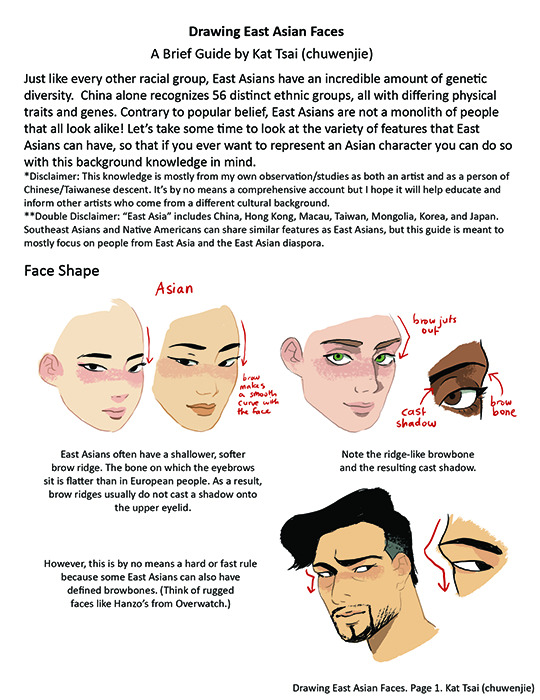
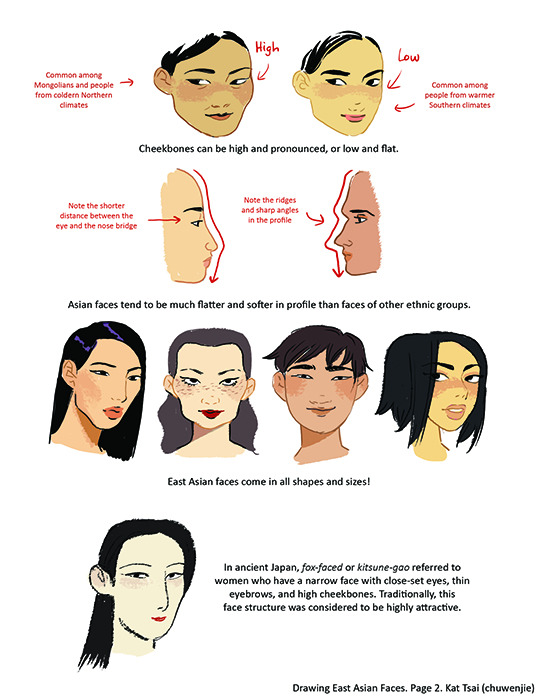
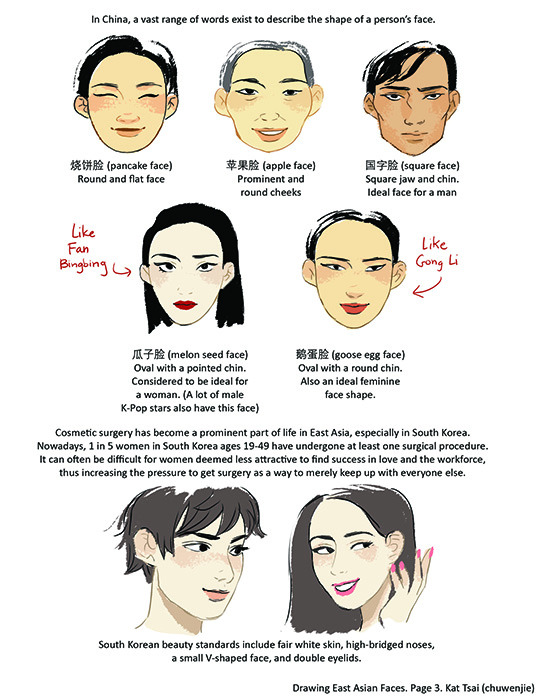
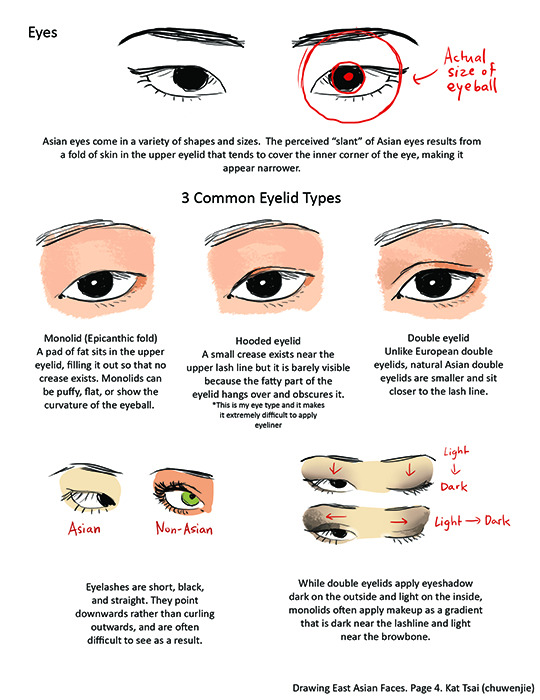
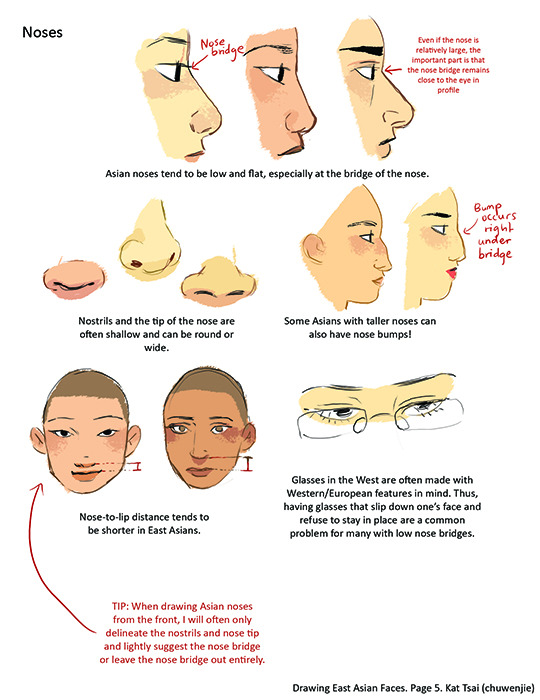
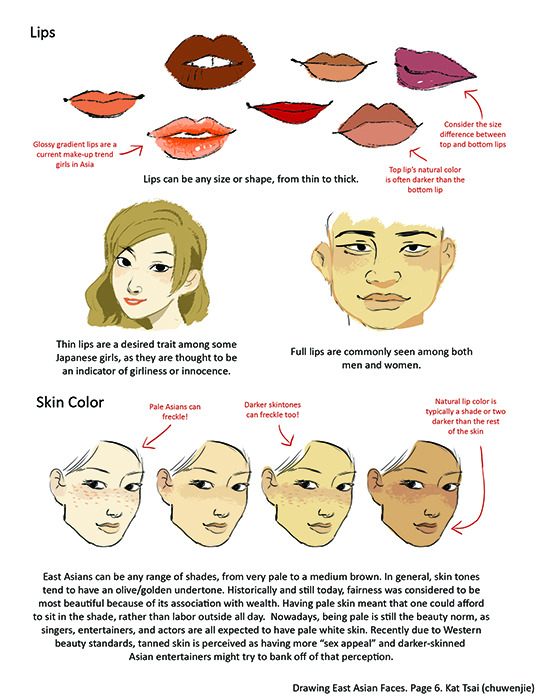
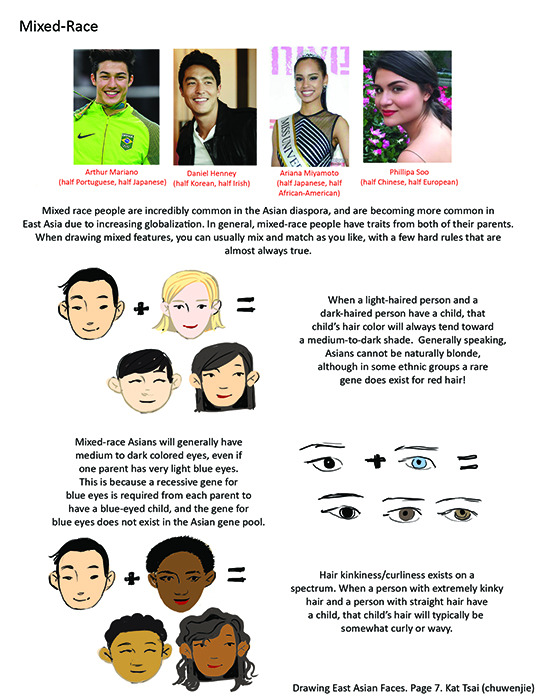

A compilation of stuff I know about drawing Asian faces and Asian culture! I feel like many “How-To-Draw” tutorials often default to European faces and are not really helpful when drawing people of other races. So I thought I’d put this together in case anyone is interested! Feel free to share this guide and shoot me questions if you have any! I’m by no means an expert, I just know a few things from drawing experience and from my own cultural background.
259K notes
·
View notes
Photo

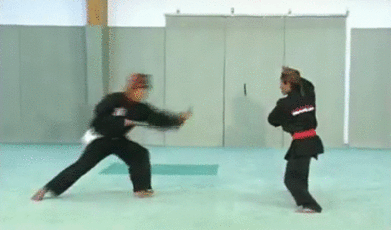


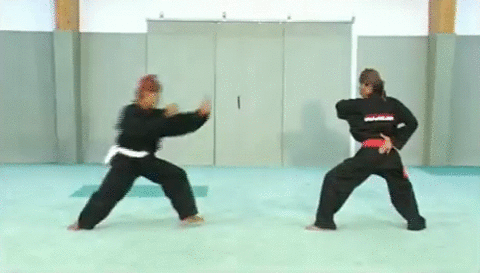
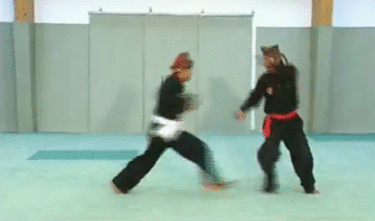
Silat applications.
Silat doesn’t fuck around. It was created hundreds of years ago with the sole purpose of killing people. Many of the applications break bones, cause internal injuries and manipulate vital places like the back and neck.
It’s historically known as being one of the more effective martial arts simply because it neutralizes an opponent right away and doesn’t opt to exchange blows..
243 notes
·
View notes
Photo

FIRST NAMES
Legal and/or Official: This is the name on legal documents. If there are no birth certificates, this name will be the equivalent of what you would put on legal documents. Not all people go by their legal or official name for several reasons. One reason could be that no one in a given culture goes by this name, but instead by a casual name. This name could be used for legal, religious, or political purposes. These names do not have to be given at birth.
Birth Name: The birth name is obviously the name given at birth, but it doesn’t have to be right after birth. It can be days, weeks, or even months after. The birth name can also be a temporary name until an official name is chosen. It depends on the culture you’ve created.
Given Name: The given name is the first name that people in Western society are referred to on a daily basis. For example, a person whose legal name is “Daniel” might go by “Dan”, or they might just go by “Daniel”.
Nickname: The nickname is different from shortened versions of names. While a person may prefer a shortened version of their name for casual use, a nickname of “Daniel” would be “Danny Boy”. However, some nicknames are used regularly like the nicknames in Holes.
Religious or Spiritual Name: Some first names are chosen for religious purposes. This could be standard in the culture you’ve created or it could be a casual occurrence.
Symbolic Name:
Appearance: Self-explanatory. However, these names might not appear until later in life.
Meaning: This refers to two things:
Author meaning: This is when you, the author, chooses a name, that exists in our world or that has roots from our world, because of its meaning.
Story meaning: This is when your character’s name is chosen because it has meaning in their fictional world.
~
MIDDLE NAMES
Legal and/or Official: See above.
Birth Name: See above.
Given Name: A person’s given name might actually be their middle name (see example 2 below).
Religious or Spiritual Name: Religious and spiritual names that are given or chosen are often done so for religious and spiritual purposes. For example, in some versions of Catholicism, children choose a saint’s name to be Confirmed under, thus making this name their Confirmation name. Some people make this part of their legal name while others do not.
Symbolic Name: See above.
Meaning: See above.
Appearance: See above.
~
SURNAMES
Ancestral: These are surnames that come from an ancestor of an individual. They can also come from a place.
Chosen: Chosen names are self explanatory, but they can also fall in the adopted category below.
Hereditary: Hereditary surnames are surnames that have been passed down through generations and that are used by the family. Any name can eventually become a hereditary name.
Clan: A clan name is a name that shows a person is a descendant of a certain person. This brings all these descendants together because they claim the same lineage, thus making them a clan. Clan names can exist alongside another surname. This varies by culture and not everyone will be associated with a clan. These are similar to ancestral names, but ancestral names are more personal and individualistic.
Occupation: Surnames can come from a person’s job. These names
Adopted: An adopted surname is just that. It is chosen by a person who adopts it from someone else. Reasons for adopting a surname from someone else vary.
Forced: Forced surnames are names that are forced on a person. This can be through adoption, kidnapping, slavery, immigration, cultural change, certain marriage practices, and a few other situations.
Appearance: See above.
Place Name: Some surnames are based on where a person is from (“George of X”).
None: Surnames do not exist everywhere.
~
ALL
Importance: Some names have significant importance to a culture. This importance can be political, religious, or just well known within a society. If certain names hold political importance (most likely surnames) and you are writing characters from well known families, make it known that their family name is important. For example, upon hearing your characters name, the behavior of others might change around them.
Taboo: Some names can be taboo or they can hold negative connotations based on historical context. For example, when people hear the name “Adolf”, they think of Hitler. If your characters have a name that is considered taboo in your world, that may affect your character. Names can be taboo for any reason. It might be taboo to be named after a deceased paternal family member or it might be taboo for a child to be given the same name as the current ruler.
Outlawed: Not all names are up for use. There could be a written law that certain names are not to be used or there could be an unwritten law that using certain names is disrespectful. For example, naming children after deities or important figures in your world’s culture could be considered illegal or at least deeply frowned upon.
Title: Like I said above, some titles can be considered names or at least part of a name. This probably won’t be part of a person’s legal name, but they might be addressed this way daily.
Syllables: Some names might be required to have a certain amount of syllables.
Epithets: Sometimes, if a child has the same name as the parent, something might be added to the name to differentiate between the two.
Traditional: Some people might have a traditional name to honor heritage or culture and an official or legal name.
~
NAME PATTERNS
Many cultures have certain prefixes or suffixes that indicate if a name if feminine, masculine, neither, or both. Make a list of suffixes or prefixes that are associated with gender to help keep naming patterns in your fictional world. You can also have different versions of the same name this way.
~
Below I will give examples of a fictional naming systems.
Keep reading
8K notes
·
View notes
Photo
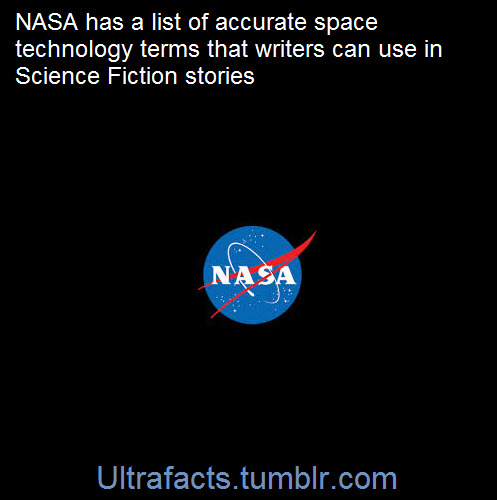
For any writers: http://er.jsc.nasa.gov/seh/SFTerms.html
For more facts, follow Ultrafacts
79K notes
·
View notes
Text
Ways to un-stick a stuck story
Do an outline, whatever way works best. Get yourself out of the word soup and know where the story is headed.
Conflicts and obstacles. Hurt the protagonist, put things in their way, this keeps the story interesting. An easy journey makes the story boring and boring is hard to write.
Change the POV. Sometimes all it takes to untangle a knotted story is to look at it through different eyes, be it through the sidekick, the antagonist, a minor character, whatever.
Know the characters. You can’t write a story if the characters are strangers to you. Know their likes, dislikes, fears, and most importantly, their motivation. This makes the path clearer.
Fill in holes. Writing doesn’t have to be linear; you can always go back and fill in plotholes, and add content and context.
Have flashbacks, hallucinations, dream sequences or foreshadowing events. These stir the story up, deviations from the expected course add a feeling of urgency and uncertainty to the narrative.
Introduce a new mystery. If there’s something that just doesn’t add up, a big question mark, the story becomes more compelling. Beware: this can also cause you to sink further into the mire.
Take something from your protagonist. A weapon, asset, ally or loved one. Force him to operate without it, it can reinvigorate a stale story.
Twists and betrayal. Maybe someone isn’t who they say they are or the protagonist is betrayed by someone he thought he could trust. This can shake the story up and get it rolling again.
Secrets. If someone has a deep, dark secret that they’re forced to lie about, it’s a good way to stir up some fresh conflict. New lies to cover up the old ones, the secret being revealed, and all the resulting chaos.
Kill someone. Make a character death that is productive to the plot, but not “just because”. If done well, it affects all the characters, stirs up the story and gets it moving.
Ill-advised character actions. Tension is created when a character we love does something we hate. Identify the thing the readers don’t want to happen, then engineer it so it happens worse than they imagined.
Create cliff-hangers. Keep the readers’ attention by putting the characters into new problems and make them wait for you to write your way out of it. This challenge can really bring out your creativity.
Raise the stakes. Make the consequences of failure worse, make the journey harder. Suddenly the protagonist’s goal is more than he expected, or he has to make an important choice.
Make the hero active. You can’t always wait for external influences on the characters, sometimes you have to make the hero take actions himself. Not necessarily to be successful, but active and complicit in the narrative.
Different threat levels. Make the conflicts on a physical level (“I’m about to be killed by a demon”), an emotional level (“But that demon was my true love”) and a philosophical level (“If I’m forced to kill my true love before they kill me, how can love ever succeed in the face of evil?”).
Figure out an ending. If you know where the story is going to end, it helps get the ball rolling towards that end, even if it’s not the same ending that you actually end up writing.
What if? What if the hero kills the antagonist now, gets captured, or goes insane? When you write down different questions like these, the answer to how to continue the story will present itself.
Start fresh or skip ahead. Delete the last five thousand words and try again. It’s terrifying at first, but frees you up for a fresh start to find a proper path. Or you can skip the part that’s putting you on edge – forget about that fidgety crap, you can do it later – and write the next scene. Whatever was in-between will come with time.
135K notes
·
View notes